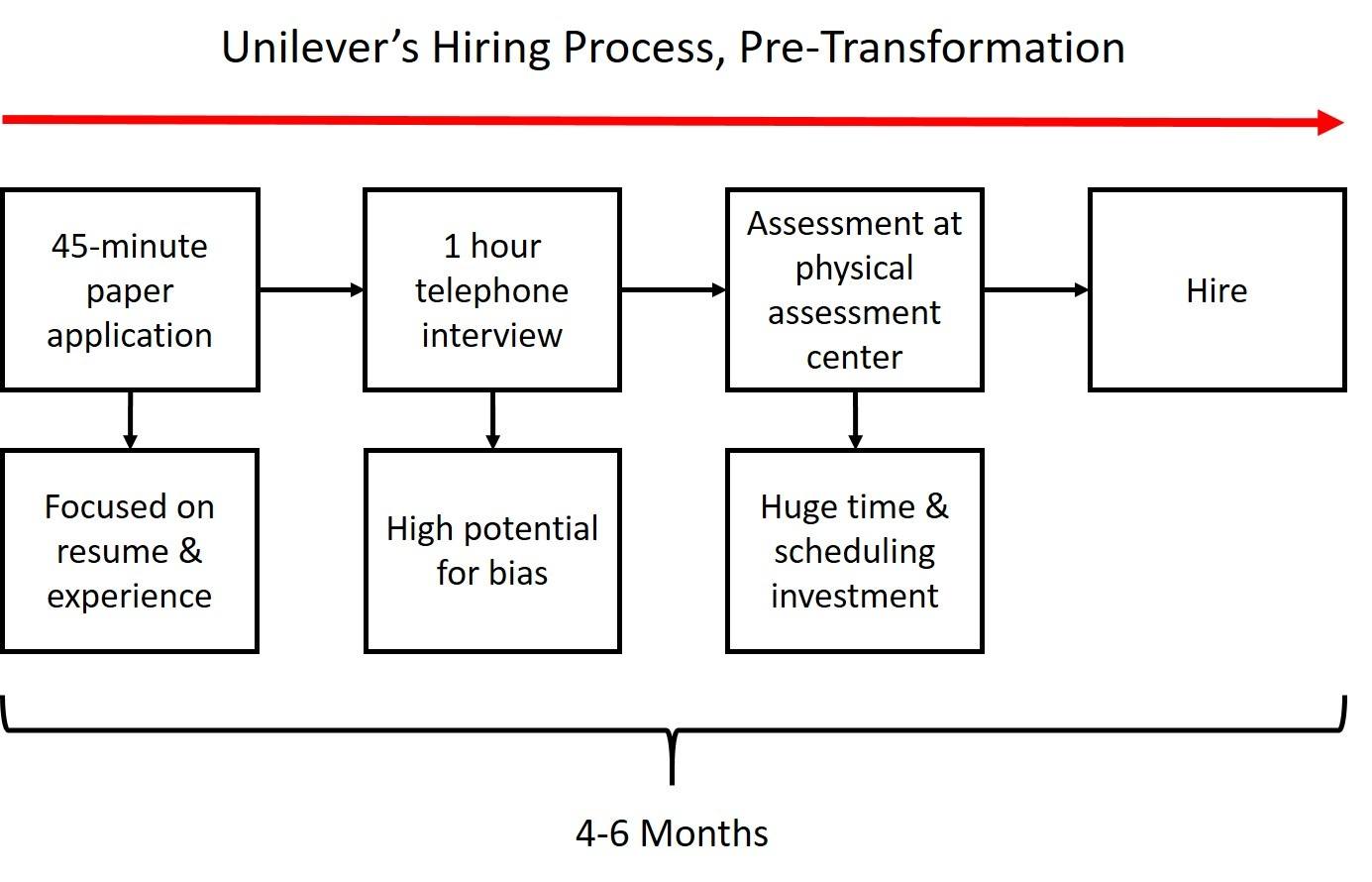Candidates: Are you interviewing and need support?
From soap bars to food spreads, Unilever’s products are used by a third of the world’s population every day. They provide employment for 169,000 people worldwide - and its leaders estimate 60% of those employees will be Millennials in three years.
Most organizations still haven’t nailed Millennial hiring. Prior to adopting a more digital-friendly hiring process, Unilever’s Future Leaders Programme was one of these.
The Future Leaders Programme at Unilever recruits recent university graduates for seven core functions: marketing, customer development / sales, finance, HR, supply chain, research and development, and IT.
Every year Unilever receives over 250,000 applications for this prestigious program. From the quarter million-strong applicant pool, it selects only 800 for employment.
Let’s look at this hiring process, pre-transformation:

Over 50,000 candidates were interviewed over the phone annually. With each phone interview lasting an hour on average, it’s not hard to see how the hiring process could take half a year.
As you might imagine, transforming a hiring process at one of the world’s largest multinational companies is a huge undertaking. We’ve looked at how difficult process change and change management are before - so for HR departments struggling to get buy-in for their initiatives, there’s a lot to learn from Unilever.
In this case study from Bersin by Deloitte, you’ll discover:
- Unilever’s new hiring process: a system that saves $1 million/year, decreases hiring time by 83%, and appeals to a new generation of employees.
- How role-playing and localized meetings were used to drive global adoption and rollout.
- How HR leaders gained buy-in from key stakeholders and executives.
- Why Indonesia was used to pilot the new process, not the UK.
“We wanted to make sure that we would truly be selecting the best candidates from these interviews and to take any unconscious bias out the process. Video interviews were the core component here, and this was a big hurdle for some of our internal stakeholders to get over. We had to ensure we had a digital process, but one that that felt very human, not robotic, and it had to be better and more efficient at selecting candidates than an in-person interview.” - Unilever’s Director of HR Services
Who should download this Bersin case study:
- Talent acquisition professionals having difficulty attracting Millennial talent.
- HR leaders struggling to get buy-in for their talent acquisition initiatives.
- Talent acquisition leaders looking for guidance on how to cut costs while increasing new hire quality and decreasing time to fill.
- Recruiters looking for examples of what the hiring process will look like in the future.
- Any organization facing roadblocks to the global rollout of new technology.
Download the full Bersin case study below.




